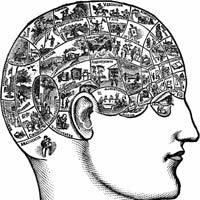The modern man doesn’t know how to use his memory
I recently finished listening Moonwalking with Einstein, Joshua Foer’s fascinating book about his yearlong quest to become a top “mental athlete”. His journey is really about how our mind’s memory developed and works from an evolutionary and historical perspective.
My reference to Gutenberg is of course about his introduction of movable type printing to Europe and how it revolutionized the inexpensive printing of books. Believe it or not, for hundreds of years prior, going back to Ancient Greece, learned people actually memorized tons of things because there was no book and written materials were very rare and confined to far-away libraries. Anecdotes of ancient and medieval people who were able to commit to memory huge amount of written material abound. It was told that an Ancient Greek named Charmadas could recite the contents of any volumes in libraries as if he were reading them.
And it wasn’t only about memorizing or recalling books; Seneca the Elder could repeat two thousand names in the order they’d been given to him. Think about that the next time you struggle to remember someone’s name at a cocktail/birthday party.
Incredibly effective memorization technique: Memory Palace
How did they do it? They used memorization techniques such the poetically named “memory palace”. They were so commonly known back then that very few written records of those techniques were found.
The memory palace mnemonic device relies on the fact that millions of years of evolution didn’t do such a good job at helping us memorizing people’s name, words, phone numbers, etc…, i.e. the important things in modern life. Instead, our hunter’s brain was shaped to memorize physical locations in order to go hunting (and gathering), remembering the good and dangerous spots and taking us safely back to camp: I left my cave, crossed the river by the big fallen tree, went left at the large boulder, etc…
The mnemonic technique is about associating the things you want to remember (your grocery list) with known locations (the rooms in your house for example). Check out this wikihow article for more details on how to use the technique. Try it! It works amazingly well.
The strong link between memorization and creativity
Now you might ask: what’s the connection between memorization techniques and creativity/innovation which is the driving topic of this blog? The answer comes fromTony Buzan (a proponent of mental literacy and inventor of Mind Mapping. Also see my recent blog post on Mind Mapping) who’s quoted in the book as follows:
In our gross misunderstanding of the function of memory, we thought that memory was operated primarily by rote. In other words, you rammed it in until your head was stuffed with facts. What was not realized is that memory is primarily an imaginative process. In fact, learning, memory, and creativity are the same fundamental process directed with a different focus.
The art and science of memory is about developing the capacity to quickly create images that link disparate ideas. Creativity is the ability to form similar connections between disparate images and to create something new and hurl it into the future so it becomes a poem, or a building, or a dance, or a novel. Creativity is, in a sense, future memory.
If the essence of creativity is linking disparate facts and ideas, then the more facility you have making associations, and the more facts and ideas you have at your disposal, the better you’ll be at coming up with new ideas.
Also, as Buzan likes to point out, Mnemosyne, the goddess of memory, was the mother of the Muses.
